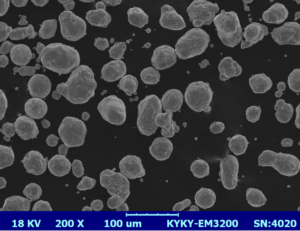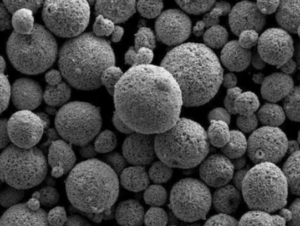파우더 개요 대형 인쇄
대형 인쇄는 광고에서 건축 모델링에 이르기까지 다양한 산업에 혁명을 일으켜 상세하고 생생한 이미지를 대규모로 제작할 수 있게 했습니다. 하지만 이 과정의 핵심 요소 중 하나가 사용되는 분말의 종류라는 것을 알고 계셨나요? 노련한 전문가이든 대형 인쇄의 작동 방식에 대해 궁금한 점이 있는 분이든, 분말의 역할을 이해하는 것은 인쇄물의 품질과 내구성에 큰 영향을 미칠 수 있습니다. 이 가이드에서는 대형 인쇄에 사용되는 분말의 세계를 자세히 살펴보고 금속 분말과 특정 응용 분야에 대해 중점적으로 다루겠습니다.
다양한 금속 분말 모델, 조성, 특성 및 장점을 살펴보겠습니다. 이러한 재료에 대한 철저한 이해를 통해 인쇄 프로젝트를 향상시키는 현명한 결정을 내릴 수 있습니다. 자세히 알아볼 준비가 되셨나요? 시작해 보겠습니다!
대형 인쇄용 분말이란 무엇인가요?
대형 인쇄에서 분말의 사용은 원하는 인쇄 품질, 질감 및 내구성을 얻는 데 매우 중요합니다. 분말은 일반적으로 선택적 레이저 소결(SLS) 또는 바인더 제팅이라는 공정을 통해 층으로 적용되는 미세하게 분쇄된 입자입니다. 이러한 분말은 금속, 세라믹 및 폴리머를 포함한 다양한 재료로 구성될 수 있으며, 각 재료는 다양한 응용 분야에 적합한 고유한 특성을 제공합니다.
이 기사에서는 강하고 내구성이 뛰어나며 복잡한 인쇄물을 만드는 데 필수적인 금속 분말에 중점을 두어 설명하겠습니다. 금속 분말은 복잡한 형상의 고강도 부품을 생산할 수 있기 때문에 항공우주, 자동차 및 의료 기기와 같은 산업에서 특히 선호됩니다.
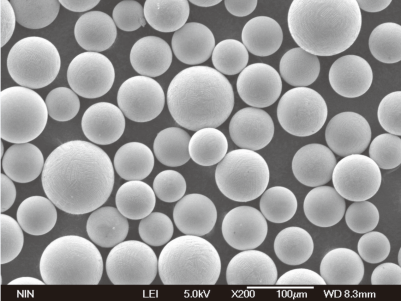
금속 분말의 종류 대형 인쇄
대형 인쇄에서 최적의 결과를 얻으려면 올바른 유형의 금속 분말을 선택하는 것이 중요합니다. 다음은 가장 인기 있는 금속 분말 모델 중 일부를 간략하게 설명하고 조성, 특성 및 적합한 응용 분야를 강조합니다.
| 금속 분말 | 구성 | 속성 | 애플리케이션 |
|---|---|---|---|
| 스테인리스 스틸 316L | 철, 크롬, 니켈 | 높은 내식성, 우수한 기계적 특성 | 항공우주, 의료 기기, 자동차 부품 |
| 인코넬 718 | 니켈, 크롬, 철 | 높은 강도, 내열성, 내산화성 | 터빈 블레이드, 로켓 엔진, 고온 환경 |
| 알루미늄 AlSi10Mg | 알루미늄, 실리콘, 마그네슘 | 경량, 우수한 열전도성, 높은 강도 대 중량비 | 자동차, 항공우주, 경량 부품 |
| 티타늄 Ti64 | 티타늄, 알루미늄, 바나듐 | 높은 강도, 낮은 무게, 생체 적합성 | 의료 임플란트, 항공우주 부품, 고성능 스포츠 장비 |
| 구리 | 순수 구리 | 우수한 전기 전도성, 높은 열전도성 | 전기 부품, 열교환기, 장식 요소 |
| 공구강 H13 | 철, 탄소, 크롬, 몰리브덴, 바나듐 | 높은 경도, 내마모성, 내열성 | 사출 금형, 다이캐스팅 도구, 절삭 공구 |
| 코발트-크롬(CoCr) | 코발트, 크롬, 몰리브덴 | 높은 내마모성, 생체 적합성, 내식성 | 치과용 임플란트, 정형외과용 임플란트, 항공우주 부품 |
| 브론즈 | 구리, 주석 | 우수한 내마모성, 미적 마감 | 조각품, 건축물, 베어링 |
| 니켈 합금 625 | 니켈, 크롬, 몰리브덴, 니오븀 | 높은 강도, 우수한 피로 및 열 피로 저항 | 해양 응용 분야, 화학 처리, 원자로 |
| 마레이징 스틸(MS1) | 철, 니켈, 코발트, 몰리브덴 | 높은 강도, 우수한 가공성, 치수 안정성 | 공구, 항공우주, 고강도 부품 |
대형 인쇄용 분말의 조성
분말의 조성은 특정 응용 분야에 적합한지 여부를 결정하는 중요한 요소입니다. 다양한 조성은 열, 부식 및 마모와 같은 환경 요인에 대한 다양한 수준의 강도, 유연성 및 저항성을 제공합니다.
| 금속 분말 | 기본 요소 | 첨가제 | 조성에서 파생된 특성 |
|---|---|---|---|
| 스테인리스 스틸 316L | 철, 크롬, 니켈 | 망간, 실리콘 | 향상된 내식성, 인성 |
| 인코넬 718 | 니켈, 크롬, 철 | 몰리브덴, 니오븀 | 우수한 고온 강도 및 내식성 |
| 알루미늄 AlSi10Mg | 알루미늄, 실리콘, 마그네슘 | 구리 | 향상된 강도 대 중량비, 우수한 주조 특성 |
| 티타늄 Ti64 | 티타늄, 알루미늄, 바나듐 | Iron | 높은 강도, 낮은 밀도, 생체 적합성 |
| 구리 | 순수 구리 | – | 뛰어난 전기 및 열 전도성 |
| 공구강 H13 | 철, 탄소, 크롬 | 몰리브덴, 바나듐 | 향상된 경도 및 내열성 |
| 코발트-크롬(CoCr) | 코발트, 크롬 | 몰리브덴 | 높은 내마모성, 생체 적합성 |
| 브론즈 | 구리, 주석 | 아연, 납 | 우수한 가공성, 내마모성 |
| 니켈 합금 625 | 니켈, 크롬 | 몰리브덴, 니오븀 | 우수한 피로 저항, 높은 강도 |
| 마레이징 스틸(MS1) | 철, 니켈, 코발트 | 몰리브덴, 티타늄 | 높은 인성, 시효 경화 능력 |
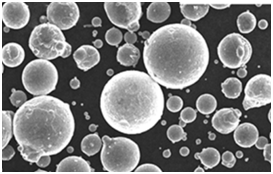


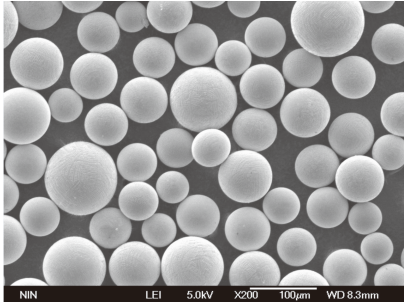
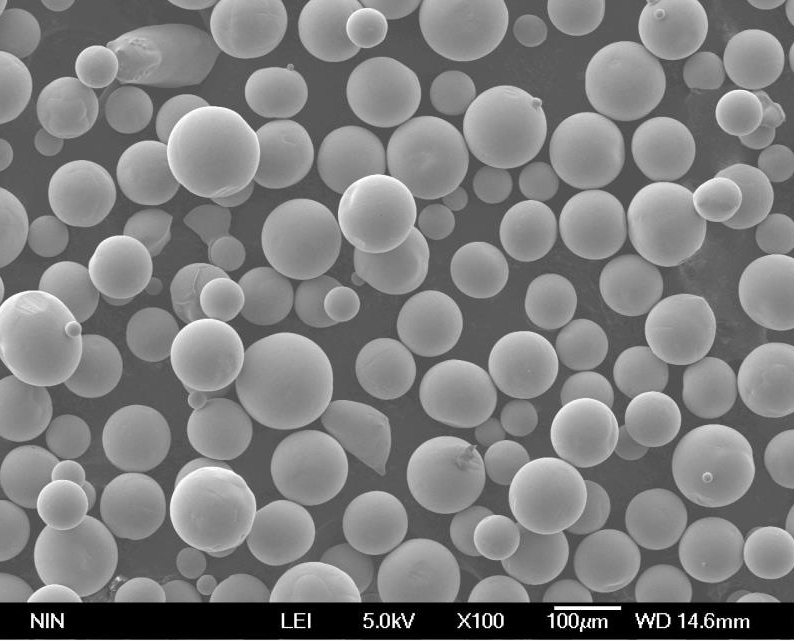
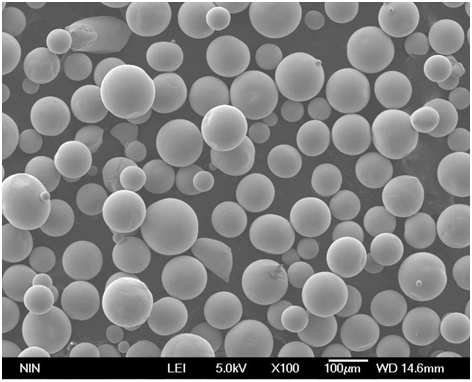
분말의 특성 대형 인쇄
다양한 분말의 특성을 이해하는 것은 인쇄 요구 사항에 맞는 올바른 재료를 선택하는 데 필수적입니다. 입자 크기, 모양 및 유동성과 같은 특성은 최종 인쇄물의 품질과 일관성에 영향을 미칠 수 있습니다.
| 특징 | 인쇄에서의 중요성 | 금속 분말 예시 | 세부 정보 |
|---|---|---|---|
| 입자 크기 | 표면 마감 및 세부 해상도에 영향을 미칩니다. | 스테인리스 스틸 316L | 더 미세한 입자는 더 매끄러운 표면을 생성합니다. |
| 파티클 모양 | 분말 유동성 및 충전 밀도에 영향을 미칩니다. | 알루미늄 AlSi10Mg | 구형 입자는 유동성을 향상시킵니다. |
| 흐름성 | 분말 층의 균일성에 영향을 미칩니다. | 티타늄 Ti64 | 우수한 유동성은 일관된 층 증착을 보장합니다. |
| 순도 | 기계적 특성 및 성능을 결정합니다. | 인코넬 718 | 고순도 분말은 더 나은 기계적 특성을 제공합니다. |
| 밀도 | 인쇄물의 무게와 구조적 무결성에 영향을 미칩니다. | 마레이징 스틸(MS1) | 밀도가 높은 분말은 더 강한 부품을 생산합니다. |
| 내산화성 | 가혹한 환경에서의 응용 분야에 중요합니다. | 니켈 합금 625 | 높은 내산화성은 부품 수명을 연장합니다. |
| 열 전도성 | 부품의 열 발산에 중요합니다. | 구리 | 높은 열전도성은 열교환기에 이상적입니다. |
대형 인쇄용 분말의 응용 분야
금속 분말은 항공우주 및 자동차에서 의료 및 장식 예술에 이르기까지 광범위한 응용 분야에 사용됩니다. 아래 표는 대형 인쇄에 사용되는 다양한 금속 분말의 가장 일반적인 응용 분야 중 일부를 강조합니다.
| 애플리케이션 | 금속 분말 | 사용 이유 |
|---|---|---|
| 항공우주 부품 | 티타늄 Ti64, 인코넬 718 | 높은 강도, 경량, 내열성 |
| 의료용 임플란트 | 코발트-크롬(CoCr), 티타늄 Ti64 | 생체 적합성, 내식성 |
| 자동차 부품 | 알루미늄 AlSi10Mg, 스테인리스 스틸 316L | 경량, 고강도, 내식성 |
| 툴링 | 공구강 H13, 마레이징강(MS1) | 높은 경도, 내마모성, 내구성 |
| 전기 부품 | 구리 | 뛰어난 전기 전도성 |
| 열교환기 | 구리, 니켈 합금 625 | 높은 열전도성, 내식성 |
| 조각품 및 장식 예술 | 브론즈 | 미적 마감, 우수한 내마모성 |
| 터빈 블레이드 | 인코넬 718, 니켈 합금 625 | 고강도, 내산화성 |
| 다이캐스팅 도구 | 공구강 H13 | 높은 내열성, 내구성 |
| 스포츠 용품 | 티타늄 Ti64 | 경량, 고성능 |
사양, 크기 및 표준
대형 인쇄용 금속 분말을 선택할 때는 인쇄 장비 및 응용 요구 사항과의 호환성을 보장하기 위해 사양, 크기 및 표준을 고려하는 것이 중요합니다.
| 금속 분말 | 사양 | 입자 크기 범위(µm) | 표준 |
|---|---|---|---|
| 스테인리스 스틸 316L | ASTM A276 | 15-45 | ISO 5832-1 |
| 인코넬 718 | AMS 5662 | 20-63 | ASTM B637 |
| 알루미늄 AlSi10Mg | ASTM B209 | 20-60 | ISO 3522 |
| 티타늄 Ti64 | ASTM F136 | 15-45 | ISO 5832-3 |
| 구리 | ASTM B170 | 10-50 | ISO 1338 |
| 공구강 H13 | ASTM A681 | 15-53 | ISO 4957 |
| 코발트-크롬(CoCr) | ASTM F1537 | 15-45 | ISO 5832-4 |
| 브론즈 | ASTM B22 | 20-63 | ISO 19701 |
| 니켈 합금 625 | AMS 5666 | 20-45 | ASTM B443 |
| 마레이징 스틸(MS1) | AMS 6512 | 15-53 | ISO 4957 |
공급업체 및 가격 세부 정보
금속 분말 시장은 광대하며 다양한 등급과 사양을 제공하는 수많은 공급업체가 있습니다. 가격은 순도, 입자 크기 및 구매 수량과 같은 요인에 따라 달라질 수 있습니다.
| 공급업체 | 금속 분말 | 가격 범위(kg당 $) | 댓글 |
|---|---|---|---|
| 샌드빅 오스프리 | 스테인리스 스틸 316L | $70 – $100 | 고품질 분말, 일관된 입자 크기 |
| 호가나스 | 인코넬 718 | $150 – $200 | 뛰어난 고온 성능 |
| LPW 기술 | 알루미늄 AlSi10Mg | $90 – $120 | 경량 응용 분야에 적합합니다. |
| AP&C | 티타늄 Ti64 | $200 – $250 | 고순도, 생체 적합성 |
| Tekna | 구리 | $80 – $110 | 전기 및 열 응용 분야에 이상적입니다. |
| 카펜터 기술 | 공구강 H13 | $100 – $130 | 우수한 경도 및 내열성 |
| EOS | 코발트-크롬(CoCr) | $180 – $220 | 높은 내마모성, 생체 적합성 |
| GKN 첨가제 | 브론즈 | $50 – $70 | 저렴하고 우수한 내마모성 |
| Velo3D | 니켈 합금 625 | $140 – $180 | 뛰어난 내피로성 |
| 고급 분말 및 코팅제 | 마레이징 스틸(MS1) | $120 – $160 | 높은 강도, 쉬운 가공성 |
금속 분말의 장단점 비교
각 금속 분말은 응용 분야에 따라 장점과 단점이 있습니다. 다음은 논의된 금속 분말의 주요 장단점 비교입니다.
| 금속 분말 | 장점 | 단점 |
|---|---|---|
| 스테인리스 스틸 316L | 높은 내식성, 우수한 기계적 특성 | 상대적으로 무겁고 열전도성이 낮습니다. |
| 인코넬 718 | 고온에서 높은 강도, 내산화성 | 비싸고 기계 가공이 어려운 제품 |
| 알루미늄 AlSi10Mg | 가볍고 우수한 열 전도성 | 다른 금속에 비해 낮은 강도 |
| 티타늄 Ti64 | 높은 중량 대비 강도, 생체 적합성 | 비싸고 작업하기 어렵습니다. |
| 구리 | 뛰어난 전기 및 열 전도성 | 산화되기 쉽고 상대적으로 부드럽습니다. |
| 공구강 H13 | 높은 경도, 내마모성 | 저온에서 부서지기 쉽고 비쌉니다. |
| 코발트-크롬(CoCr) | 높은 내마모성, 생체 적합성 | 가공하기 어렵고 비쌉니다. |
| 브론즈 | 우수한 내마모성, 미적 마감 | 상대적으로 낮은 강도, 변색되기 쉽습니다. |
| 니켈 합금 625 | 우수한 피로 및 내식성 | 비싸고 무겁습니다. |
| 마레이징 스틸(MS1) | 높은 강도, 우수한 가공성 | 비싸고 특정 환경에서 부식되기 쉽습니다. |

자주 묻는 질문
대형 인쇄에 가장 일반적으로 사용되는 금속 분말은 무엇인가요?
스테인리스강 316L은 우수한 내식성, 기계적 특성 및 상대적인 경제성으로 인해 가장 일반적으로 사용되는 금속 분말 중 하나입니다. 항공우주, 자동차 및 의료 기기와 같은 산업에서 널리 사용됩니다.
티타늄 Ti64가 의료 분야에서 선호되는 이유는 무엇인가요?
티타늄 Ti64는 높은 강도 대 중량비, 생체 적합성 및 내식성으로 인해 의료 분야에서 선호되어 임플란트 및 내구성이 뛰어나고 가벼운 재료가 필요한 기타 의료 기기에 이상적입니다.
단일 인쇄 프로젝트에서 여러 유형의 금속 분말을 사용할 수 있나요?
예, 특히 인쇄물의 다른 섹션에 다른 특성이 필요한 고급 응용 분야에서는 단일 프로젝트에서 여러 유형의 금속 분말을 사용할 수 있습니다. 그러나 이를 위해서는 정교한 인쇄 장비와 분말 간의 오염을 방지하기 위한 인쇄 공정의 신중한 관리가 필요합니다.
입자 크기는 인쇄 품질에 어떤 영향을 미치나요?
일반적으로 입자 크기가 작을수록 표면이 더 매끄럽고 세밀해지지만 유동성이 낮아져 분말 층의 일관성에 영향을 미칠 수 있습니다. 반면에 입자가 클수록 유동성이 향상될 수 있지만 표면 마감이 거칠어질 수 있습니다.
인쇄 후 금속 분말을 재활용할 수 있나요?
예, 금속 분말은 인쇄 후 재활용하여 재사용할 수 있지만 각 사용 시 특성이 약간 저하될 수 있습니다. 재활용 가능성은 특정 분말 유형 및 사용된 인쇄 공정에 따라 다릅니다.
금속 분말의 일반적인 유통 기한은 얼마인가요?
금속 분말의 유통 기한은 재료 및 보관 조건에 따라 다를 수 있습니다. 일반적으로 금속 분말은 건조하고 서늘한 환경에 보관하고 최적의 성능을 유지하기 위해 1년 이내에 사용해야 합니다.
